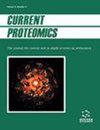不同分析方法评价蓖麻蛋白与槲皮素的相互作用
IF 0.5
4区 生物学
Q4 BIOCHEMICAL RESEARCH METHODS
引用次数: 0
摘要
蓖麻毒素是已知毒性最强的蛋白质。它是核糖体失活蛋白(RIPs, type 2)的一部分,在他的研究中产生了重要意义;用酚类化合物来解毒这种蛋白质是可能的;然而,有必要了解这种解毒是如何发生的。采用电泳、紫外可见光谱和高效液相色谱分析蓖麻毒素蛋白与槲皮素黄酮醇的解毒过程。对样品的上清液和沉淀物进行紫外可见分析;采用单因素方差分析(ANOVA)和Tukey检验对提取结果进行分析,总蛋白含量显著水平为0.05.34.9 μg / mL,蓖麻毒素含量显著水平为4.2 μg / mL。共进行了8次相互作用,均出现沉淀,通过电泳技术观察到蛋白质对应的条带减少;用高效液相色谱法分析这些结果,观察到色谱峰面积的大小减小。在这项研究中获得的结果表明,蛋白质的团聚,产生沉淀,可能有利于蛋白质的失活作为一个解毒过程。本文章由计算机程序翻译,如有差异,请以英文原文为准。
Evaluation of the interaction between ricin protein and quercetin using different analytical methods
Ricin is the most toxic protein known. It is part of the ribosome-inactivating proteins, RIPs, type 2, which has generated importance in his research; it is possible to detoxify this protein with phenolic compounds; however, it is essential to understand how this detoxification occurs.
To analyze using electrophoresis, UV-visible spectroscopy, and high-performance liquid chromatography (HPLC) the protein ricin with the flavonol quercetin, understanding the detoxification process.
The UV-visible analysis was performed on both the supernatant and the precipitate of the samples; these results were analyzed using one-factor analysis of variance (ANOVA) and a Tukey test with a significance level of 0.05.
34.9 μg / mL of total protein and 4.2 μg / mL of ricin were obtained in the extraction method. Eight interactions were carried out, and all presented precipitation, observing through the electrophoresis technique a decrease in the bands corresponding to the protein; these results were analyzed with HPLC observing a decrease in the size of the area of the peaks in the chromatograms.
The results obtained in this study suggest an agglomeration of the protein, generating a precipitate that could benefit the protein's inactivation as a detoxification process.
求助全文
通过发布文献求助,成功后即可免费获取论文全文。
去求助
来源期刊

Current Proteomics
BIOCHEMICAL RESEARCH METHODS-BIOCHEMISTRY & MOLECULAR BIOLOGY
CiteScore
1.60
自引率
0.00%
发文量
25
审稿时长
>0 weeks
期刊介绍:
Research in the emerging field of proteomics is growing at an extremely rapid rate. The principal aim of Current Proteomics is to publish well-timed in-depth/mini review articles in this fast-expanding area on topics relevant and significant to the development of proteomics. Current Proteomics is an essential journal for everyone involved in proteomics and related fields in both academia and industry.
Current Proteomics publishes in-depth/mini review articles in all aspects of the fast-expanding field of proteomics. All areas of proteomics are covered together with the methodology, software, databases, technological advances and applications of proteomics, including functional proteomics. Diverse technologies covered include but are not limited to:
Protein separation and characterization techniques
2-D gel electrophoresis and image analysis
Techniques for protein expression profiling including mass spectrometry-based methods and algorithms for correlative database searching
Determination of co-translational and post- translational modification of proteins
Protein/peptide microarrays
Biomolecular interaction analysis
Analysis of protein complexes
Yeast two-hybrid projects
Protein-protein interaction (protein interactome) pathways and cell signaling networks
Systems biology
Proteome informatics (bioinformatics)
Knowledge integration and management tools
High-throughput protein structural studies (using mass spectrometry, nuclear magnetic resonance and X-ray crystallography)
High-throughput computational methods for protein 3-D structure as well as function determination
Robotics, nanotechnology, and microfluidics.
 求助内容:
求助内容: 应助结果提醒方式:
应助结果提醒方式:


